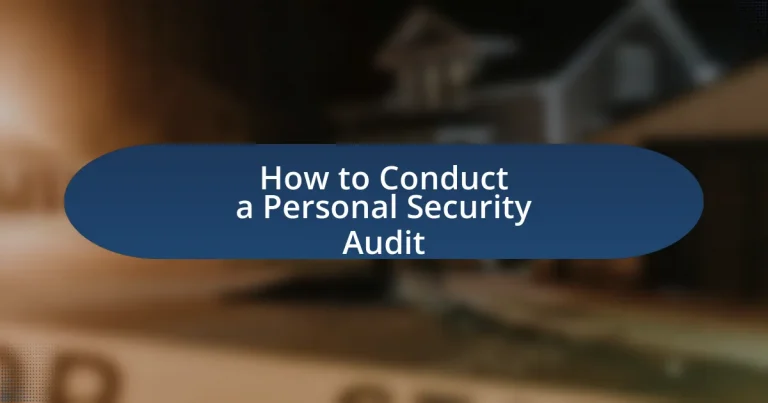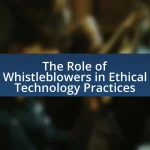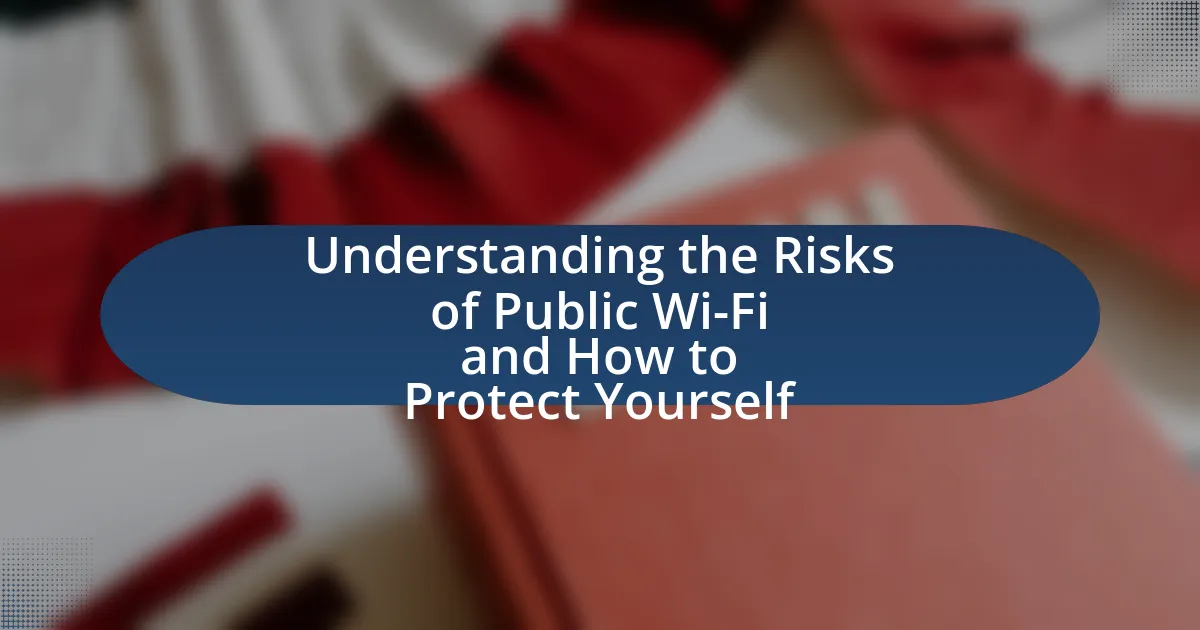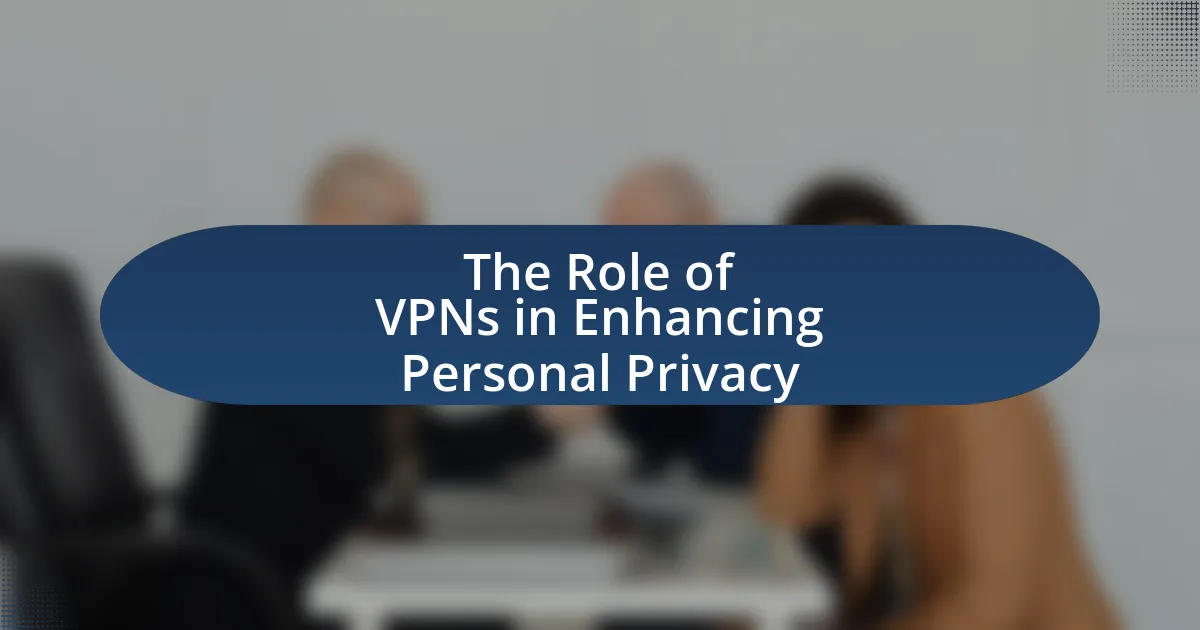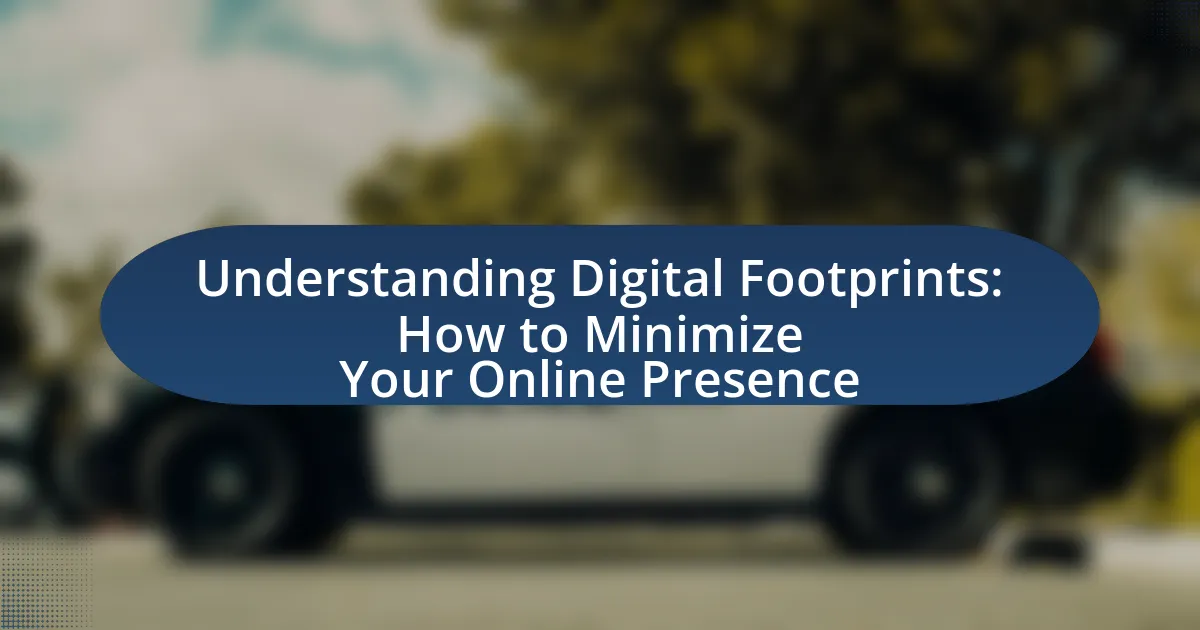A Personal Security Audit is a thorough assessment of an individual’s security practices aimed at identifying vulnerabilities and enhancing safety across physical and digital domains. This article outlines the importance of conducting such audits, highlighting the risks they can uncover, including identity theft and cyberattacks. Key components of the audit process include risk assessment, vulnerability analysis, and evaluating security measures, while practical steps for preparation and implementation of findings are also discussed. Additionally, the article provides resources and best practices for maintaining an ongoing security plan, ensuring individuals can effectively protect themselves against potential threats.

What is a Personal Security Audit?
A Personal Security Audit is a comprehensive evaluation of an individual’s security measures and practices to identify vulnerabilities and enhance personal safety. This audit typically involves assessing physical security, digital security, and personal habits that may expose an individual to risks. For instance, a study by the National Cyber Security Centre highlights that personal audits can reduce the likelihood of identity theft by up to 30% when individuals implement recommended security practices.
Why is conducting a Personal Security Audit important?
Conducting a Personal Security Audit is important because it helps individuals identify vulnerabilities in their personal security measures. By systematically evaluating aspects such as online privacy, physical safety, and financial security, individuals can uncover weaknesses that may expose them to risks like identity theft or physical harm. Research indicates that 60% of small businesses that experience a data breach close within six months, highlighting the critical need for proactive security assessments. Regular audits empower individuals to implement necessary changes, thereby enhancing their overall security posture and reducing the likelihood of security incidents.
What risks can a Personal Security Audit help identify?
A Personal Security Audit can help identify risks such as unauthorized access to personal information, vulnerabilities in digital security systems, and potential physical security threats. By systematically evaluating personal security measures, individuals can uncover weaknesses that may expose them to identity theft, cyberattacks, or physical harm. For instance, a study by the Identity Theft Resource Center found that 1 in 15 Americans were victims of identity theft in 2020, highlighting the importance of identifying and mitigating such risks through regular audits.
How can a Personal Security Audit enhance personal safety?
A Personal Security Audit enhances personal safety by identifying vulnerabilities and implementing measures to mitigate risks. This systematic evaluation assesses various aspects of an individual’s environment, including home security, online presence, and personal habits. By pinpointing weaknesses, such as inadequate locks or poor online privacy settings, individuals can take targeted actions to strengthen their security. Research indicates that homes with security systems are 300% less likely to be burglarized, demonstrating the effectiveness of proactive security measures. Thus, conducting a Personal Security Audit not only raises awareness of potential threats but also empowers individuals to take actionable steps to protect themselves.
What are the key components of a Personal Security Audit?
The key components of a Personal Security Audit include risk assessment, asset identification, vulnerability analysis, security controls evaluation, and incident response planning. Risk assessment involves identifying potential threats and evaluating their impact on personal security. Asset identification focuses on recognizing valuable items and sensitive information that require protection. Vulnerability analysis examines weaknesses in current security measures that could be exploited. Security controls evaluation assesses the effectiveness of existing safeguards, such as alarms and access controls. Finally, incident response planning prepares individuals for potential security breaches, outlining steps to mitigate damage and recover effectively. Each component plays a crucial role in ensuring comprehensive personal security.
What areas should be assessed during a Personal Security Audit?
A Personal Security Audit should assess the following areas: physical security, digital security, personal safety, and emergency preparedness. Physical security involves evaluating locks, alarms, and surveillance systems to ensure protection against unauthorized access. Digital security includes reviewing passwords, software updates, and data encryption to safeguard against cyber threats. Personal safety focuses on assessing situational awareness, self-defense measures, and safe travel practices. Emergency preparedness encompasses planning for natural disasters, medical emergencies, and evacuation procedures to ensure readiness in critical situations. Each of these areas is essential for a comprehensive evaluation of personal security risks and mitigation strategies.
How do physical and digital security measures differ in a Personal Security Audit?
Physical and digital security measures differ in a Personal Security Audit primarily in their focus and implementation. Physical security measures involve tangible protections such as locks, surveillance cameras, and security personnel to safeguard physical assets and environments. In contrast, digital security measures focus on protecting electronic data and systems through firewalls, encryption, and access controls. For example, a study by the Ponemon Institute in 2020 highlighted that organizations allocate approximately 30% of their security budgets to physical security, while 70% is directed towards digital security, reflecting the increasing importance of safeguarding digital assets in today’s technology-driven landscape.
How can you prepare for a Personal Security Audit?
To prepare for a Personal Security Audit, individuals should conduct a thorough review of their personal security practices and assets. This includes assessing physical security measures, such as locks and alarms, reviewing digital security protocols like password management and software updates, and evaluating personal data privacy settings on social media and online accounts. According to the National Cyber Security Centre, regular audits can help identify vulnerabilities and improve overall security posture, making it essential to document findings and create an action plan for addressing any identified weaknesses.
What information and tools do you need before starting the audit?
Before starting a personal security audit, you need a comprehensive understanding of your current security posture, including existing vulnerabilities, security policies, and relevant regulations. Essential tools include risk assessment frameworks, security checklists, and software for vulnerability scanning. For instance, the NIST Cybersecurity Framework provides guidelines for assessing and improving security measures, while tools like Nessus or OpenVAS can identify vulnerabilities in your systems. These resources ensure a thorough evaluation of your security landscape, enabling effective identification and mitigation of risks.
How can you create a checklist for your Personal Security Audit?
To create a checklist for your Personal Security Audit, start by identifying key areas of focus such as physical security, digital security, and personal safety. Each area should include specific items to evaluate, such as ensuring locks are functional for physical security, updating passwords for digital security, and assessing emergency plans for personal safety.
For example, under physical security, you might include checking the condition of doors and windows, while digital security could involve reviewing software updates and antivirus protection. Personal safety might encompass evaluating your emergency contacts and escape routes.
This structured approach ensures comprehensive coverage of all relevant aspects of personal security, allowing for a thorough assessment and identification of vulnerabilities.
What steps are involved in conducting a Personal Security Audit?
To conduct a Personal Security Audit, follow these steps: first, identify and assess your personal assets, including physical items, digital accounts, and sensitive information. Next, evaluate potential threats to these assets, such as theft, cyberattacks, or unauthorized access. Then, review existing security measures, including locks, passwords, and privacy settings, to determine their effectiveness. After that, implement improvements based on your assessment, which may involve upgrading technology, enhancing physical security, or adopting better privacy practices. Finally, regularly review and update your security measures to adapt to new threats and changes in your personal circumstances. This structured approach ensures a comprehensive evaluation of personal security.
How do you evaluate your physical security measures?
To evaluate physical security measures, conduct a comprehensive assessment that includes identifying vulnerabilities, reviewing existing security protocols, and testing the effectiveness of security systems. This process involves analyzing access controls, surveillance systems, and physical barriers to determine their adequacy in preventing unauthorized access or breaches. For instance, a study by the Security Industry Association found that organizations with regular security audits experience 30% fewer security incidents, highlighting the importance of systematic evaluation.
What methods can you use to assess your digital security?
To assess your digital security, you can use methods such as vulnerability scanning, penetration testing, and security audits. Vulnerability scanning involves using automated tools to identify security weaknesses in your systems, which can help pinpoint areas that require attention. Penetration testing simulates cyberattacks to evaluate the effectiveness of your security measures, providing insights into potential exploit paths. Security audits involve a comprehensive review of your security policies, procedures, and controls to ensure compliance with best practices and regulations. These methods are validated by industry standards, such as the NIST Cybersecurity Framework, which emphasizes the importance of regular assessments to maintain robust digital security.
What common mistakes should be avoided during a Personal Security Audit?
Common mistakes to avoid during a Personal Security Audit include neglecting to assess all areas of personal security, such as digital, physical, and social aspects. Focusing solely on one area can leave vulnerabilities unaddressed. Additionally, failing to document findings and action plans can lead to repeated oversights in future audits. Not involving relevant stakeholders, such as family members or IT professionals, can result in incomplete assessments. Lastly, overlooking the importance of regular updates to security measures can render previous audits ineffective, as threats evolve over time.
How can overlooking certain areas impact the effectiveness of the audit?
Overlooking certain areas can significantly diminish the effectiveness of an audit by allowing potential risks and vulnerabilities to remain unaddressed. When auditors fail to examine critical components, such as data protection measures or access controls, they may miss identifying weaknesses that could lead to security breaches. For instance, a study by the Institute of Internal Auditors found that 30% of organizations experienced security incidents due to inadequate auditing of key areas. This statistic underscores the importance of comprehensive coverage during audits to ensure all potential threats are evaluated and mitigated.
What are the consequences of not updating your security measures regularly?
Not updating security measures regularly can lead to increased vulnerability to cyberattacks and data breaches. When security protocols are outdated, they may not defend against the latest threats, allowing attackers to exploit known vulnerabilities. For instance, according to a report by Verizon, 43% of data breaches involve small businesses, often due to inadequate security measures. Additionally, failure to update can result in non-compliance with regulations, leading to legal penalties and loss of customer trust. Regular updates are essential to mitigate risks and protect sensitive information effectively.
How can you implement the findings from your Personal Security Audit?
To implement the findings from your Personal Security Audit, prioritize the identified vulnerabilities and create a detailed action plan addressing each one. Begin by categorizing the findings based on risk levels, such as high, medium, and low, which allows for focused resource allocation. For example, if the audit reveals weak passwords as a high-risk issue, immediately enforce stronger password policies and consider implementing two-factor authentication.
Next, establish a timeline for addressing each vulnerability, ensuring that high-risk items are resolved promptly. Regularly review and update security measures based on the audit findings, as this proactive approach helps maintain a secure environment. Additionally, educate yourself and others involved about the importance of security practices, reinforcing the changes made.
By systematically addressing the findings and integrating them into daily practices, you enhance your overall security posture effectively.
What are the best practices for improving your security based on audit results?
To improve security based on audit results, organizations should implement a risk management framework that prioritizes identified vulnerabilities. This involves categorizing risks, applying appropriate controls, and continuously monitoring the effectiveness of these measures. For instance, the National Institute of Standards and Technology (NIST) recommends using the Risk Management Framework (RMF) to systematically address security weaknesses. Additionally, organizations should conduct regular training sessions for employees to raise awareness about security protocols and potential threats, as human error is a significant factor in security breaches. According to a study by IBM, 95% of cybersecurity breaches are due to human error, highlighting the importance of ongoing education. Regularly updating software and systems to patch vulnerabilities is also crucial, as outdated systems are often targeted by attackers. Implementing these best practices can significantly enhance an organization’s security posture based on audit findings.
How can you create an ongoing security plan after the audit?
To create an ongoing security plan after the audit, first, establish a framework that includes regular assessments, updates, and training. This framework should incorporate findings from the audit, prioritizing identified vulnerabilities and implementing corrective measures. Regularly scheduled reviews, at least quarterly, ensure that the security measures remain effective and adapt to new threats. Additionally, continuous employee training on security protocols reinforces awareness and compliance. According to the National Institute of Standards and Technology (NIST), organizations that regularly update their security practices can reduce the risk of breaches by up to 50%.
What resources are available for conducting a Personal Security Audit?
Resources available for conducting a Personal Security Audit include online assessment tools, security checklists, and professional consultation services. Online assessment tools, such as those provided by cybersecurity firms, allow individuals to evaluate their security posture through guided questionnaires and automated analysis. Security checklists, often available from government agencies like the Federal Trade Commission, provide step-by-step instructions for assessing personal security measures, including digital privacy and physical safety. Professional consultation services, offered by security experts, can provide tailored audits and recommendations based on individual circumstances. These resources collectively enhance the effectiveness of a Personal Security Audit by providing structured guidance and expert insights.
Where can you find templates and tools for security audits?
Templates and tools for security audits can be found on various cybersecurity websites and platforms. Notable sources include the National Institute of Standards and Technology (NIST), which provides comprehensive guidelines and templates for security assessments, and the Center for Internet Security (CIS), which offers tools and frameworks for conducting audits. Additionally, platforms like GitHub host community-contributed templates and tools specifically designed for security audits, allowing users to access a wide range of resources tailored to different needs.
What professional services can assist with a Personal Security Audit?
Professional services that can assist with a Personal Security Audit include security consulting firms, cybersecurity companies, and private security agencies. Security consulting firms provide expertise in assessing vulnerabilities and recommending improvements, while cybersecurity companies focus on digital security measures, including data protection and threat analysis. Private security agencies can offer physical security assessments and personal safety strategies. These services are essential for identifying risks and implementing effective security measures tailored to individual needs.
What are some practical tips for conducting an effective Personal Security Audit?
To conduct an effective Personal Security Audit, start by assessing your physical environment, including home security measures like locks, alarms, and lighting. Evaluate digital security by reviewing passwords, software updates, and privacy settings on devices and accounts. Additionally, analyze your online presence by searching for personal information that may be publicly accessible and adjusting privacy settings accordingly. Regularly update security protocols and educate yourself on current threats to maintain a proactive stance. These steps are essential as they help identify vulnerabilities and enhance overall security, reducing the risk of breaches.
